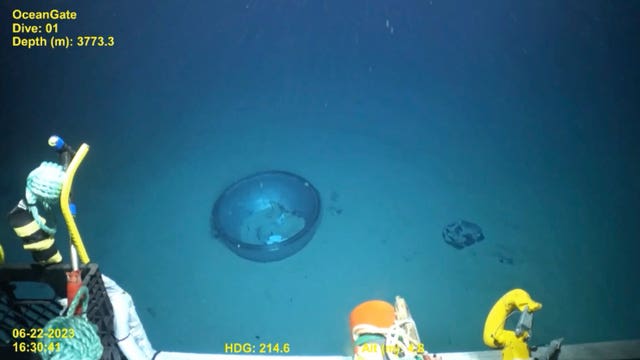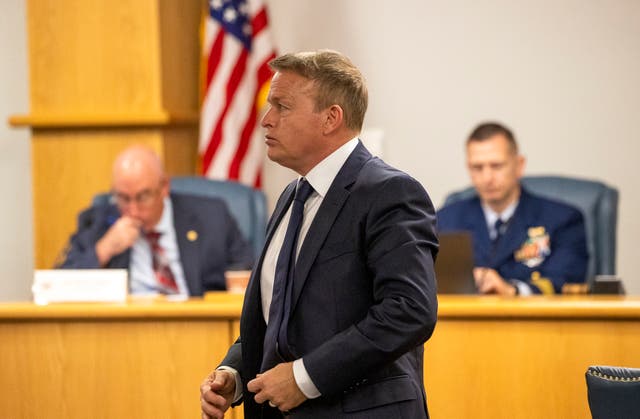
Shelagh Fogarty 1pm - 4pm
23 September 2024, 15:04

Guillermo Sohnlein helped found OceanGate with the late Stockton Rush.
The co-founder of the company that owned the experimental submersible that imploded en route to the wreckage of the Titanic has described lofty goals when the company was created, telling the US coast guard that the company wanted to create multiple deep-water submersibles that could be deployed around the world.
Businessman Guillermo Sohnlein, who helped found OceanGate with Stockton Rush, said the original vision was to create a fleet of four or five deep-diving submersibles capable of carrying five people to 6,000 metres (6,500 yards) deep.
The plan for the company was to have no dedicated mothership.
Mr Sohnlein said: “We wanted to give humanity greater access to the ocean, specifically the deep ocean.”

He ultimately left the company before the Titan disaster in June 2023.
Mr Rush was among the five people who died when the submersible imploded. Though Mr Sohnlein left the Washington company years ago, he spoke in defence of its efforts in the aftermath of the submersible’s implosion.
The US coast guard opened a public hearing earlier this month that is part of a high level investigation into the cause of the implosion. Some of the testimony has focused on the troubled nature of the company.
Earlier in the hearing, former OceanGate operations director David Lochridge said he frequently clashed with Mr Rush and felt the company was committed only to making money.
“The whole idea behind the company was to make money,” Mr Lochridge said.
“There was very little in the way of science.”
Other witnesses expected to testify Monday include former OceanGate engineering director Phil Brooks and Roy Thomas of the American Bureau of Shipping. The hearing is expected to run through until Friday and will include more witnesses.
Mr Lochridge and other witnesses have painted a picture of a troubled company that was impatient to get its unconventionally designed craft into the water.

The accident set off a worldwide debate about the future of private undersea exploration.
Coast guard officials noted at the start of the hearing that the submersible had not been independently reviewed, as is standard practice. That and Titan’s unusual design subjected it to scrutiny in the undersea exploration community.
OceanGate, based in Washington state, suspended its operations after the implosion. The company has no full-time employees currently, but has been represented by a lawyer during the hearing.
During the submersible’s final dive on June 18 2023, the crew lost contact after an exchange of texts about Titan’s depth and weight as it descended.
The support ship Polar Prince then sent repeated messages asking if Titan could still see the ship on its onboard display.
One of the last messages from Titan’s crew to Polar Prince before the submersible imploded stated, “all good here”, according to a visual re-creation presented earlier in the hearing.
When the submersible was reported overdue, rescuers rushed ships, planes and other equipment to an area about 435 miles south of St John’s, Newfoundland.
Wreckage of the Titan was subsequently found on the ocean floor about 330 yards off the bow of the Titanic, coast guard officials said. No-one on board survived.
OceanGate said it has been fully cooperating with the coast guard and NTSB investigations since they began. Titan had been making voyages to the Titanic wreckage site going back to 2021.